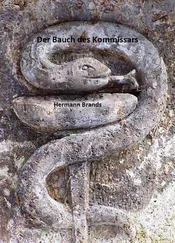Finally, this analysis brilliantly questions the role of communication sciences in relation to the situation of a society in the grip of its destiny, between the radical pragmatism of an economic rationality to which no one gives the capacity to define a history, and a stubborn determination of men to invent and preserve the symbolic dimension of their existence. This book clearly demonstrates the lucidity that can be brought to us by the communicative requalification of realities that have been preempted for decades by conceptions that deny the importance of communication, even when they claim to use it. But it also shows that all the categories on which the scientific analysis of communication has been built for half a century, the public space, information, the media, the communication process itself, far from being merely the framework for the confrontation between conceptions of society, are at stake, because it is around their definitions that battles are fought. By hijacking Foucault, we can see that in the field of commercial mediation, too, “[communication] is not only what translates the struggles or systems of domination, but that for which, that with which we struggle, the power we seek to seize” (Foucault 1971, p. 12).
The social sciences, increasingly subject to evaluation standards and practiced in a professional context in which time for writing is often the least important part, are concentrated on “qualifying” journal articles. This is probably very useful, if only to lead the continuous observation of a world governed by permanent innovation. But some questions that are transversal, not specific to a field or profession, crossing society and requiring the effort of a step back, can only really be asked in a book.
It is this book that Caroline Marti offers us.
Yves JEANNERET
Emeritus Professor in Information and Communication Sciences
GRIPIC, CELSA
Sorbonne University
I would like to thank my family and friends for their loving support, which was so precious for the development of this book, both in Bordeaux and Paris. Special thanks to my son, Felix, for his precious help with translation matters.
I am very grateful to Yves Jeanneret, the inspiring guarantor of HDR, for our long-term exchanges, which have nourished me so much.
I would like to thank my students and professional speakers at CELSA Sorbonne University for often drawing my attention to productive cases.
I owe a lot to the exchanges within the “ICS family”, whose scope and openness I appreciate so much, and in particular that of GRIPIC, which is always stimulating.
“Any other authority comes from another origin than nature. If one seriously considers this matter, one will always go back to one of these two sources: either the force and violence of an individual who has seized it, or the consent of those who have submitted to it by a contract made or assumed between them and the individual on whom they have bestowed authority.”
(Diderot 1995 [1751–1765])
I.1. Cultural proposals and commercial mediation
I.1.1. A strange mediation
Rodin’s The Thinker explodes onto the front page of the French newspaper, Le Monde 1. The famous sculpture is represented with an IV drip in the arm. Below, a sentence comments: “What if a crisis was the worst time to sacrifice culture?” This is a communication from the E. Leclerc group that implicitly poses as a defender of culture.
This advertisement, published in December 2013, seems very far from the somewhat earlier November 2013 issue of Le Monde , referring to the decision of the Ministers of Economy and Consumer Affairs to take action against the distribution group for “imbalance” in its relationships with its suppliers 2, a decision followed by the group’s condemnation in January 2014.
After having distinguished itself as an economic player involved in particularly tough negotiations, the E. Leclerc company soon became a brand that defended the common good of culture. The announcement was in line with E. Leclerc’s strategy, an entity concerned with positioning itself on the defense of low prices, which is both the objective and pretext for its practices. It illustrates the promise of access to culture for the greatest number of people, thanks to the prices charged by E. Leclerc in its “cultural spaces”. The brand, which in 2018 claimed to be “the second largest bookshop in France”, has since then consistently promoted its role as an intermediary for access to culture, going so far as to invest the new literary year, in 2016, with the creation of the Landerneau readers’ prize 3.
Admittedly, the culture in question here corresponds to the commercial activity of the brand, but one can be struck by the position that the brand attributes to itself. By choosing to refer more broadly to “culture”, it goes beyond its role as a seller of products, books, CDs, films, etc. Indeed, it adopts a critical stance induced by the evocation of the “worst time” and expresses a political and societal point of view that is normally the prerogative of legal and mandated bodies for this purpose.
How does delivering products designed by cultural industries make it possible to take a look at culture? Certainly, there is a slippage, a classic figure of advertising rhetoric that would seem banal if the media insertion of the ad were different. The gap between the Le Monde audience and the nature of the targeting that could be expected from an advertisement really intended to attract guests to cultural spaces is due to the institutional objective of this communication. Its objectives are to challenge decision-makers and public authorities, with whom the brand is regularly in tension, but also to highlight the brand’s social mission. Culture is represented as sick and The Thinker as needing care. The image is captured, but the hyperbola deflates at the same time as it is expressed, the drip seeming unsuitable for a bronze statue.
This anecdotal detour into E. Leclerc makes it possible to point out a phenomenon that goes beyond the limited scope of this example: that of the propensity of brands to embrace fields beyond those normally given to them, in order to adopt a broader societal and social point of view. In his speech in Le Monde , E. Leclerc claims to be an actor capable of counteracting the effects of the crisis and ensuring that everyone’s cultural life is not affected. No matter how artificial the nature of this claim, what matters to me in this case lies neither in the commercial ambition, nor in the power relations with suppliers, nor in the interpellation of the public authorities on which E. Leclerc regularly exerts pressure, as in November 2013 with regard to VAT.
What seems to me to be major in this example is the expression attributed to a brand in the public space to affirm it as a social actor and, in particular, as a kind of cultural mediator here. Both a challenge to the authorities in power and diffuse traditional powers, and an ambitious position, this example testifies to a characteristic contemporary trait, since it seems so recurrent and large: brands are more and more linked to social life. Admittedly, while the cultural industries continue their dynamic of industrialization, non-cultural products are being culturalized (Bouquillion et al . 2013), but what I depict goes beyond that.
Far from limiting themselves to the functions assigned to them by theorists over time, which can be summarized by the functions of signaling, differentiation, and then symbolization of offers, brands seem to be becoming autonomous, far from the monolithism of a mission of strictly supporting transactions to take on new responsibilities. Regularly visiting brands for many years, thanks to my duties as a teacher-researcher at CELSA, has enabled me to observe a change in their communication, with the intense development of cultural proposals aimed at the target audience.
Читать дальше












